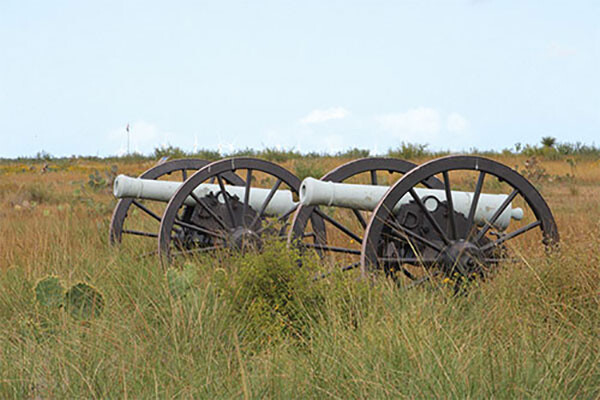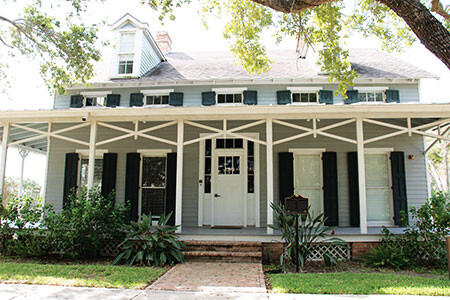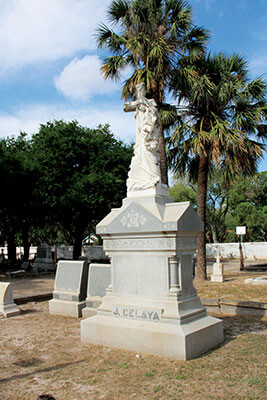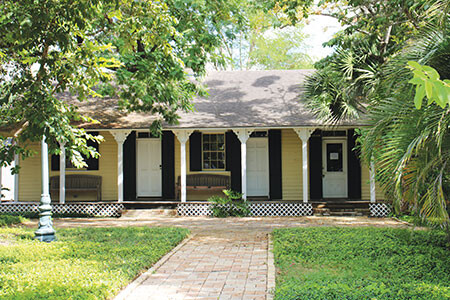 By Carina A. Brunson
By Carina A. Brunson
Growing up in the Valley, in Mission, I knew about some of the history of the region. My grandparents were farmers, and I knew how important that was to the community and I knew snippets of the importance to the Valley’s history. Being a Mission resident, I also knew a lot of the citrus industry and the vital role it played in the community’s history. In 2008, when I worked for the Progress Times and assisted with gathering history on the city for their Centennial Magazine the paper was producing, I learned a more in depth history of the City of Mission and could not believe how much I did not know.
This season I am trying to get out in the community and learn about the other cities of the Valley. I decided to start with Brownsville – a city I knew very little about except the little things we include in our Rio Grande Valley Visitors Guide. I knew there were historical buildings and that we have some battlegrounds in the area. It was eye opening though visiting the museums and stepping in those buildings – you see that history in a much different perspective. I can’t believe how much history is in, or how much how much has happened in, this Valley I have called home for most of my life. 
In a time where many activities and gatherings have been cancelled, we are now given an opportunity to learn about the area we live in. We often don’t take the time to see things around us. We instead look at other places to go and see, instead of our own backyard. We have a rare opportunity to see our community in a different light. I invite you to go on your own journey in your community and see what you can learn. It might make it feel more like home.
So here we go to Brownsville… please enjoy this and look for other issues during the season where I tell you some history about some of the other cities in this Gem of a Valley we have.
The beginning of Brownsville included the hunting and gathering societies of the Cahuiltecans, Lipan Apaches and Karankawas. The Spanish did not begin establishing settlements along the Rio Grande until 1746. When the City of Matamoros, Mexico was founded in 1784, it brought more migrants to the area.
The Republic of Texas claimed the Rio Grande as its border after winning its independence in 1836. There were many ongoing disputes regarding this boundary, so General Zachary Taylor was sent to establish a base at Point Isabel and to construct a fort across from Matamoros – This has been known as Fort Texas before being named after Major Fort Brown.
 Two more known battles, together called the Mexican-American War, have been fought in the City of Brownsville. One was at Palo Alto and the other was at Resaca de la Palma. Both areas can be visited today and showcase artifacts from the battles. The battles were fought on May 8 and 9 in 1846. These battles led to the Treaty of Guadalupe Hidalgo which established the Rio Grande as the border – eventually leading to California, Nevada, Utah and parts of other states becoming part of the United States.
Two more known battles, together called the Mexican-American War, have been fought in the City of Brownsville. One was at Palo Alto and the other was at Resaca de la Palma. Both areas can be visited today and showcase artifacts from the battles. The battles were fought on May 8 and 9 in 1846. These battles led to the Treaty of Guadalupe Hidalgo which established the Rio Grande as the border – eventually leading to California, Nevada, Utah and parts of other states becoming part of the United States.
The Brownsville Historical Association has this wonderful fold out map of the City of Brownsville. You can download a version from www.brownsvillehistory.org or get one at one of the museums. I got mine at the Stillman house. On the website you can also download their walkable tours and sync it with Google Maps or other software you might have on your phone. They have six walking tours depending on what areas you want to see. If I had more time, I would have probably gone on a couple of their walking tours.
Their Downtown and Market Square Walking Tour include the Stillman House, Profirio Diaz House, Webb Drugstore, San Roman Building, Majestic Theatre, the Old City Library, and more in their downtown historical area.
The Stillman House was all set up pretty close to how it would have been in the 1850’s. It has a beautiful hearth kitchen, outdoor garden area, wood floors, white columns out front, and there is an area that displays the history of the Stillman’s and city. The Porfirio Diaz House has been transformed into a museum. There is a lot to see in this building – from the history of farming, trains, cars and battles that have been fought in the area.
The Fort Brown Walking Tour includes the Post Hospital Annex/Medical Laboratory, Commanding Officer’s Quarters, the Old Morgue, Commissary, Post Chapel, among other buildings. There is a Resaca that has amazing views of the campus as well. These buildings have changed uses over time and are now a college campus, but still carry on the architecture of the mid-1800s.
There is a City Cemetery and Train Depot Walking Tour that takes you back in time to the sounds of yesteryear hearing the trains whistling as they brought in goods, picked up goods, or transported the calvary. The City Cemetery has several sections within that highlight above ground crypts and many of the founders of the City of Brownsville. The cemetery features a Masonic section, a Hebrew Cemetery, and a Catholic Parcel. There is also a Potter’s Field in the cemetery. Potter’s Field was a designated area for the burial of the indigent, and also include unclaimed bodies of bandits and criminals and victims of disease epidemics and war. 
Other walking tours are the Former Courthouse Tour that includes the Immaculate Conception Cathedral, Lusena House and Old Jail. The Palm Boulevard Walking Tour includes the First Presbyterian Church built in 1927, Brownsville High School built in 1916 and the Clearwater School built in 1922. The Alonso Building and Sacred Heart Walking Tour includes the Brooks House (1888), Hanson House (1876), Alonso Building (1877), Sacred Heart Church (1912), Old Gas Station (1935), and many more houses of note.
Another place to visit in Brownsville includes the Commemorative Air Force Museum located at the old Cameron County airport. They are located at 27617 Buena Vista Boulevard. Call them for their hours at (956) 479-8585.
There is too much history to put here, so I invite you to visit www.brownsvillehistory.org and learn about how rich in history the city is. It played a vital role in developing our current border and developing the rest of the Valley in turn. The city has grown a lot since 1840 and continues to grow but has not forgotten its history.













